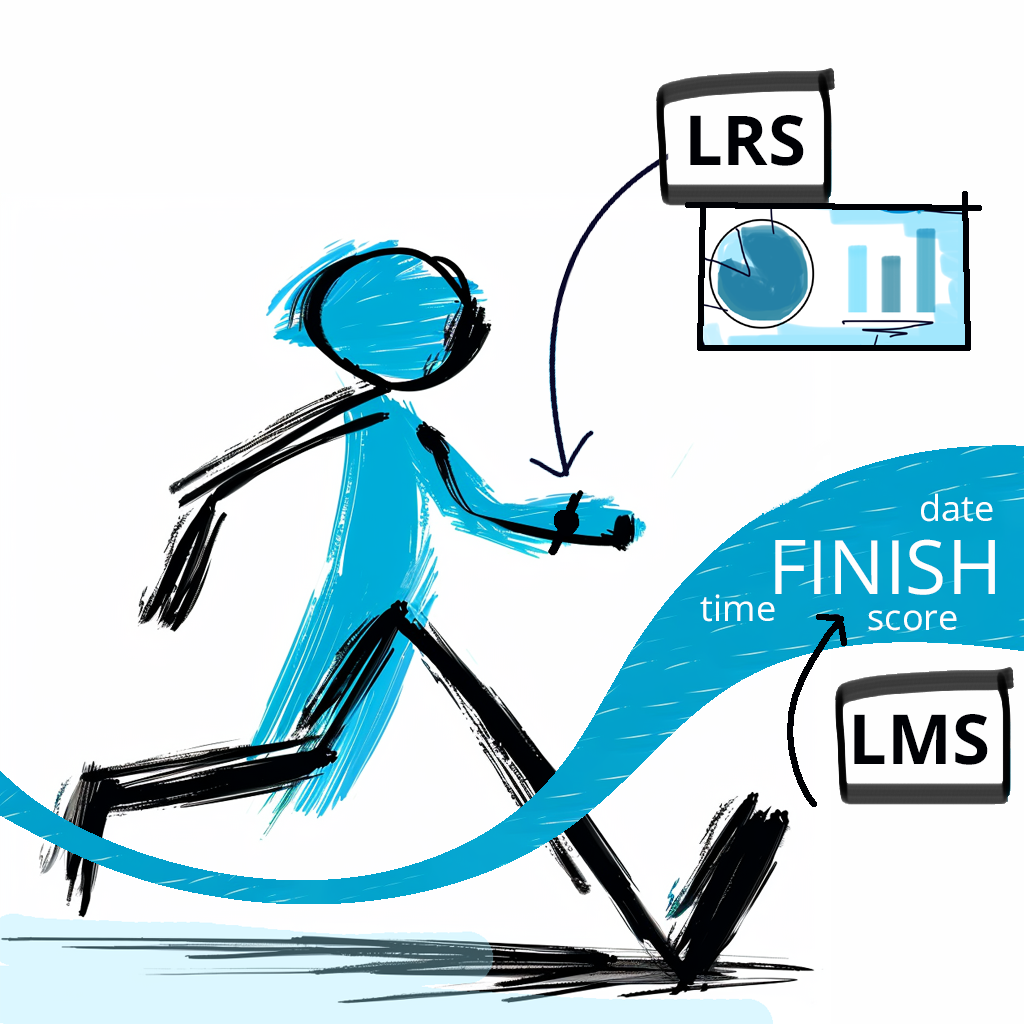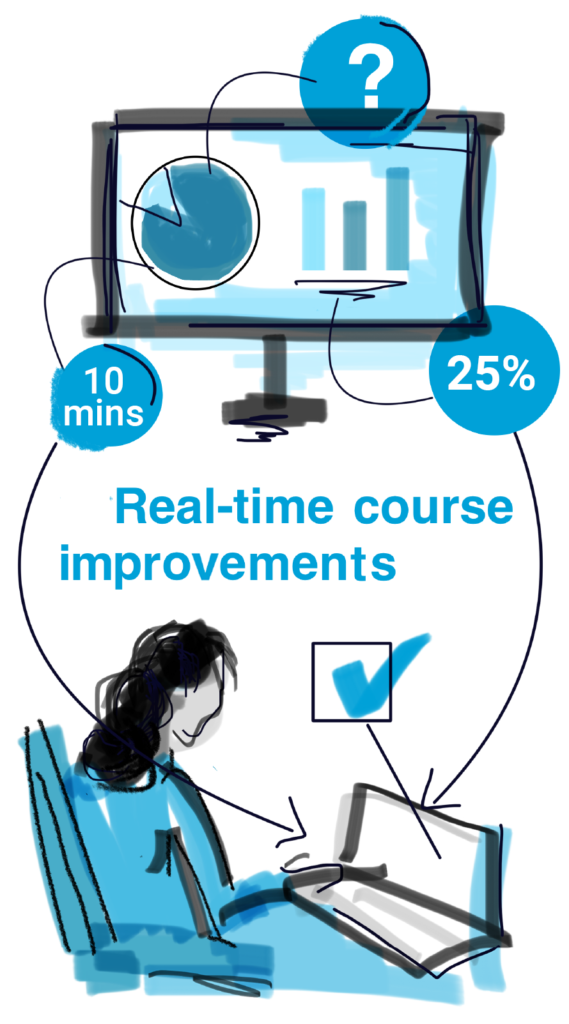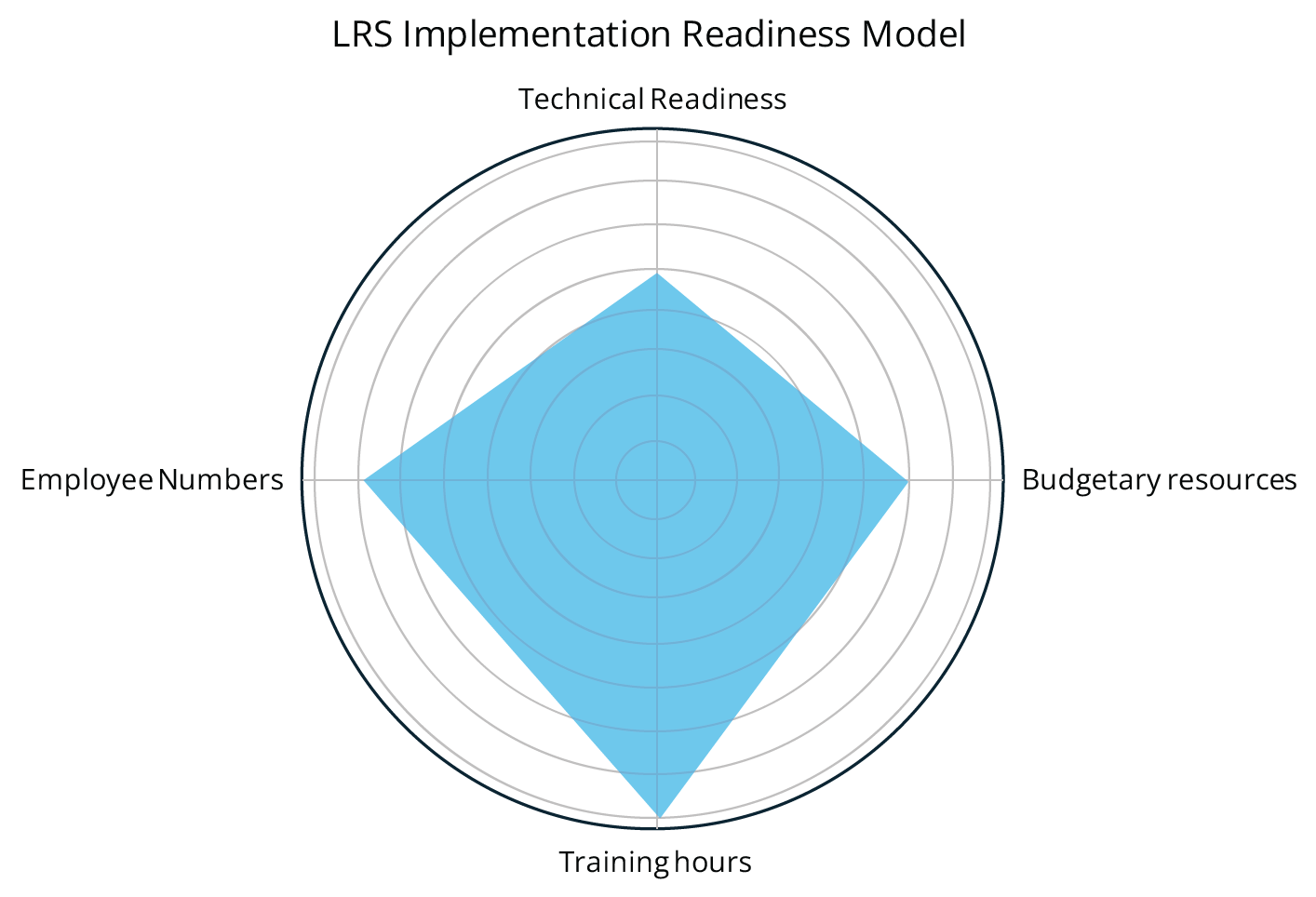Making the case for a Learning Record Store
- David Herbert
- April 12, 2024
- 1:02 pm
- No Comments
In L&D, technology greatly facilitates our training methods. With this is mind, it seems that discussions about it in adult learning often focus on the delivery modalities (such as video, gamification, instructor-led) and tools like Zoom and Slack. And currently, there’s a fervor around AI and its impact on learning and development—mostly for good reason. However, in my experience across both the private and public sectors, one technology that often goes unnoticed in digital delivery is the LRS (Learning Record Store). It goes unnoticed simply because most companies don’t have one.1 I would argue that this can be an oversight for mid-sized to large organizations that value learning and seek a serious ROI for their endeavors. Given its foundational role as a data repository, an LRS can also play an even greater role in the AI-assisted future of learning, where algorithms and personalized education solutions thrive on large data sets—provided, of course, that there is a robust data strategy supporting the technology.
What is an LRS?
A Learning Record Store is a digital ledger of sorts, specifically designed for tracking, storing, and managing learning data. Imagine every time someone takes an online course, reads an educational article, or completes a training module, tiny bits of data about these activities are created. An LRS collects all this data, giving us a clear picture of someone’s learning journey. This is done by collecting three key pieces of information – the actor (who is doing the activity), the verb (the action taken, e.g., ‘completed’, ‘read’, ‘attempted’ ‘abandoned’), and the object (what the action is being done to, e.g., a particular course, video or module). These data points provide more granular insights into the learner’s interactions, such as every click, completion, test result, and even time spent on an activity.
In short, the primary functions of an LRS are pretty straightforward but useful:
- Tracking: It captures detailed data on learning activities. Every click, completion, test result, and even time spent on a learning activity is recorded.
- Storing: This data isn’t just collected; it’s also securely stored. This means that over time, an LRS becomes a rich repository of learning records.
- Retrieving: The stored data can be accessed and analyzed. This allows L&D professionals to understand how effective their courses are and how learners are progressing.
If you’ve played around in eLearning software like Articulate Storyline, you will have seen the built-in triggers like “send an xAPI statement”. These statements are sent to your LRS and allow you to determine success metrics (e.g. ‘John Doe abandoned this video’, ‘Carol Smith completed this module’).
I’m a big fan of avoiding long learner surveys where possible (a post for another time) and I think greater knowledge of learner behavior, provided by these statements, can help to create more precise, focused survey questions that can dispel or confirm patterns you may have noticed in learner behavior thanks to a robust LRS.
Difference Between an LRS and an LMS (Learning Management System)
Most learning professionals are familiar with, and have used, an LMS (Learning Management System) to deliver, track, and manage training and educational courses. Common names in the LMS space are platforms like Moodle, Blackboard, LearnUpon, and Canvas. These systems are basically digital classrooms or libraries where learners can access courses, submit assignments in educational institutions, and receive grades or completion certificates. However, it’s worth noting that an LMS is not the same as an LRS (Learning Record Store).
I like running, so let’s use this as an analogy. For runners, the LMS would be a website where they could sign up for any number of available races (marathons, 10k, half marathon). This site would mark their attendance on race day, and record their completion of the race. It’s the organizer ensuring each runner has the opportunity to participate and records basic information about their participation. The LMS is about the overall management and delivery of learning content. It’s where learners go to access courses and where administrators track completion and compliance. Most companies delivering digital asynchronous learning have some form of LMS.
On the other hand, an LRS would be a tracker (think Fitbit or Strava) on each runner. It’s not just about whether they finish the race; it’s about recording their running time, noting the moments they slowed down or sped up, and when they took breaks or climbed a hill. An LRS is focused on capturing detailed data on learning experiences. This data then feeds into understanding learning patterns, effectiveness of the content, and helping in personalizing the learning experience.
While there are options for combined LMS and LRS platforms, most large LMSs generally don’t have an LRS natively integrated. They simply don’t provide that granular data to know what’s happening inside your eLearning courses. This often requires the use of APIs to connect the LMS with a separate LRS. This integration enables the LMS to manage and deliver learning content while the LRS tracks detailed learner interactions, but it requires setting up and managing connections between the two systems. This may also explain the absence an LRS in many organizations (more on this below).
In sum, for L&D folks, an LMS is a great photo-finish of where your learners are in the race. But if you want to make more data-driven decisions about your learning, it can be useful to have the both photo and the film. The balance sheet and the P&L.

Why Are LRSs Seldom Used in Organizations?
LMS platforms like Canvas and Moodle are well-recognized and pretty much essential for eLearning delivery. Yet, as previously mentioned, the integration of a Learning Record Store into these systems isn’t as common. In my experience, this lack of adoption is often due to a combination of misconceptions and real-world challenges.
Awareness and Understanding: Many L&D professionals are more acquainted with LMSs than LRSs. In fact I’ve talked to many seasoned L&D folks who haven’t heard the term LRS.
Perceived Complexity: The thought of integrating an LRS often seems daunting, presumed to require significant IT resources and expertise
Cost Concerns: In lean L&D setups, decision-makers might see an LRS as an extra expense instead of a valuable investment in more advanced learning analytics.
Data Use: Understanding the value of in-depth learning data is one thing; effectively using it is another. Without a clear strategy to leverage this data, an LRS can seem less attractive. And much like a fitness tracker, I would argue it’s not worth having one if nothing is done with the data
Integration Challenges: Integrating an LRS with current LMS platforms or other tools can appear challenging, raising concerns about compatibility and data transfer.
How L&D Professionals Can Overcome These Challenges:
Education and Advocacy: Raising awareness about LRS functionalities and their benefits can change perceptions. Ever heard someone ask “What if learners are just skipping through to the end of that module?” Tell them an LRS would be able to answer that question and many more.
Highlighting Long-term ROI: Focusing on the long-term benefits, like improved learning outcomes, justifies the initial investment. If cost is an issue, consider building an LRS in-house and starting small (more on that below).
Developing a Sound Data Strategy: Guidance on effective data use can make an LRS more appealing. Consider how an LRS may complement your existing analytics ecosystem (LMS, learner surveys, employee engagement platforms, internal message boards).
Vendor Support: Opting for LRS providers with strong support and easy integration can ease transition fears.
Use Gen AI to Leverage Your LRS Data
Knowing whether certain sections of a course are replayed, parts are skipped, or if some content takes longer to understand, is good data to have. This level of detail extends far beyond traditional metrics like completion rates and offers a richer, more dynamic view of learning processes.
Moreover, integrating gen-AI tools like ChatGPT or Claude with your LRS data can simplify analysis for those without extensive data science expertise (myself included). Try uploading your data via Markdown or .CSV to your tool of choice and using a prompt like “Analyze the recent cybersecurity course data and provide a summary of areas where learners struggled, including suggestions for content enhancement.” Ideally this should be within a GPT agent that has your course storyboard in its knowledge base. This approach facilitates quick, actionable insights, making it easier for learning professionals to customize their content and strategies. As with any process involving generative artificial intelligence tools, human oversight is a crucial final step.
These insights also help with personalization. The detailed data from an LRS enables you to tailor content and learning paths to individual needs. If data reveals that learners constantly struggle with certain topics, these can be modified or supplemented. On an individual level, if a learner consistently excels in certain areas, they can be directed to more challenging materials, maintaining engagement and promoting continuous growth.

Final thoughts
A Learning Record Store (LRS) can offer real benefits to organizations by providing more in-depth analytics that feed into decision-making, facilitating your learning ROI, and enabling more focused and less frequent learner surveys. A next step is using this data to create greater personalization of your learning experiences, which hopefully impacts learner engagement and effectiveness. However, going the LRS route is not without its challenges, including more complexity and cost (some perceived IMO), which can put some L&D departments off. When deciding whether or not to implement an LRS, L&D professionals should identify the critical point at which the advantages really outweigh the drawbacks. In addition to budgetary and technical readiness, this is fundamentally a convergence of employee numbers and total training hours, the point at which learning analytics becomes essential for improving learning outcomes and managing resource allocation efficiently.

Glossary of terms
Learning Record Store (LRS): A digital repository designed to track, store, and manage learning data, capturing detailed information about learners’ interactions with educational content.
Return on Investment (ROI): A measure used to evaluate the efficiency of an investment. In L&D, it generally refers to the benefits received from training relative to the cost incurred.
xAPI (Experience API): A specification used in eLearning that allows learning content and learning systems to speak to each other in a manner that records and tracks all types of learning experiences.
Learning Management System (LMS): A software application for the administration, documentation, tracking, reporting, automation, and delivery of educational courses or training programs.
Articulate Storyline: A software tool used for creating interactive eLearning courses.
API (Application Programming Interface): A set of protocols and tools for building software applications, which can be used to connect different software components, such as an LMS and an LRS in the case of this article.
Gen AI (Generative Artificial Intelligence): AI technology that can generate text, images, or other media outputs based on training from large datasets. GPT Agent: A customized implementation of the GPT (Generative Pre-trained Transformer) model, tailored for specific organizational needs. I use the feature available in ChatGPT 4. This involves creating specialized prompts and uploading documents to build a GPT model that addresses specific use cases or functions, enhancing its relevance and effectiveness.
CSV (Comma-Separated Values): A file format used to store tabular data in plain text, where each line corresponds to a data record, and each record consists of fields separated by commas.
Markdown: A lightweight markup language with plain text formatting syntax, often used to format readme files, for writing messages in online discussion forums, and to create rich text using a plain text editor. From my experience, the GPTs I’ve created tend to retrieve and read these files more easily than PDFs.
Footnotes
1 Finding specific data comparing the adoption rates of Learning Management Systems (LMS) and Learning Record Stores (LRS) is challenging. While LMS adoption is high and growing, with a significant presence in both large and midsize companies, the adoption of LRS, a newer technology often integrated within LMS, is not as well documented. The exact statistics contrasting companies with LMS but without LRS are not readily available, suggesting that many organizations might still be in the early stages of adopting LRS technology or may use an LRS as part of their existing LMS systems. Sources: TrainingMag.com, Course Method, SCORM.com.